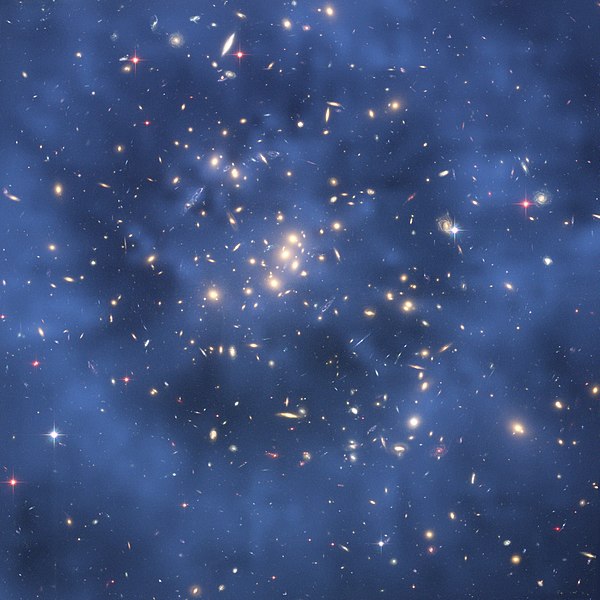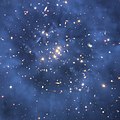Faịlụ:CL0024+17.jpg

Otu nyochaa a ha:600 × 600 piksels Ndị ọzọ mkpebi:240 × 240 piksels | 480 × 480 piksels | 768 × 768 piksels | 1,024 × 1,024 piksels | 2,048 × 2,048 piksels | 3,921 × 3,921 piksels.
Failụ si na nke mbu (3,921 × 3,921 pixel, ívù akwukwo orunótu: 23.03 MB, MIME nke: image/jpeg)
Ịta nke usòrò
Bìri èhì/ogè k'ị hụ òtù ụ̀fa dị̀ m̀gbè ahụ̀.
| Èhì/Ogè | Mbọ-aka | Ógólógó na asaá | Òjìème | Nkwute | |
|---|---|---|---|---|---|
| dị ùgbu â | 14:33, 19 Julaị 2009 |  | 3,921 × 3,921 (23.03 MB) | Tryphon | Original size. |
| 02:36, 17 Mee 2007 |  | 1,280 × 1,280 (1.75 MB) | Clh288~commonswiki | {{Information |Description=Astronomers using NASA's Hubble Space Telescope have discovered a ghostly ring of dark matter that formed long ago during a titanic collision between two massive galaxy clusters. The ring's discovery is among the strongest evide |
Ojiji faịlụ
Ihe ndị na-eso ihe eji Ihu akwụkwọ eme na faịlụ a:
Ejiji failụ zụrụ ọha
Wikis ndi a edeputara na eji kwa failụ a:
- Ihe eji na af.wikipedia.org
- Ihe eji na ar.wikipedia.org
- Ihe eji na az.wikiquote.org
- Ihe eji na bcl.wikiquote.org
- Ihe eji na bn.wikiquote.org
- Ihe eji na cs.wikipedia.org
- Ihe eji na cy.wikiquote.org
- Ihe eji na el.wikipedia.org
- Ihe eji na en.wikipedia.org
- Ihe eji na en.wikiquote.org
- Henry David Thoreau
- Leo Tolstoy
- Niels Bohr
- Karl Popper
- Arthur C. Clarke
- Friedrich Nietzsche
- Kate Bush
- Emily Brontë
- Ludwig Wittgenstein
- Helen Keller
- Joseph Addison
- Isaac Newton
- Jorge Luis Borges
- Edgar Allan Poe
- Fyodor Dostoyevsky
- Stephen Hawking
- Nikola Tesla
- Leaves of Grass
- Julian (emperor)
- Richard Feynman
- Four Quartets
- Eric Hoffer
- Jack Kerouac
- Aldous Huxley
- Aleister Crowley
- James Branch Cabell
- Denise Levertov
- Ken Wilber
- Rumi
Lee more global usage of this file.


